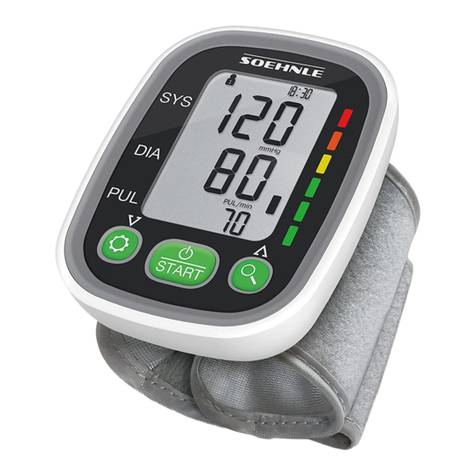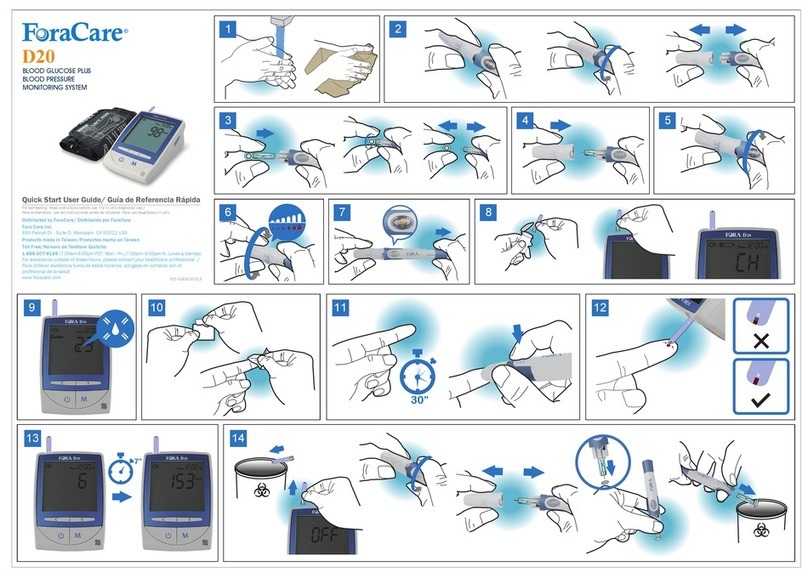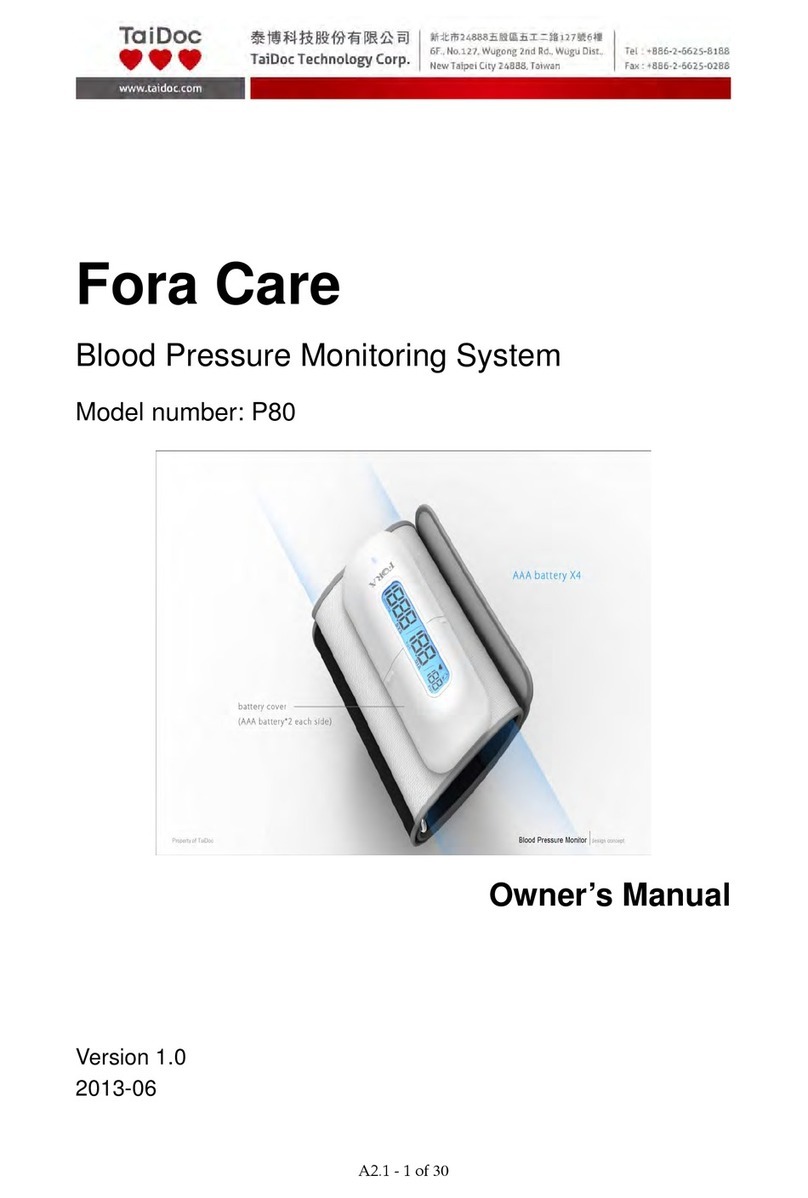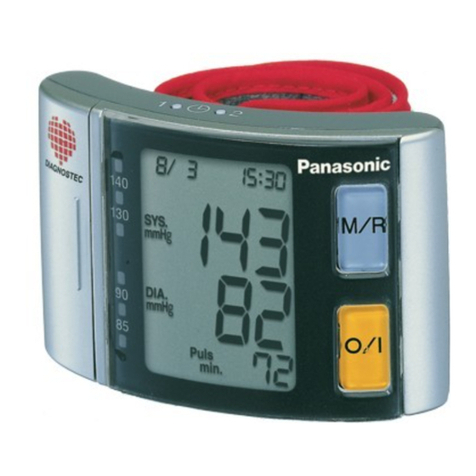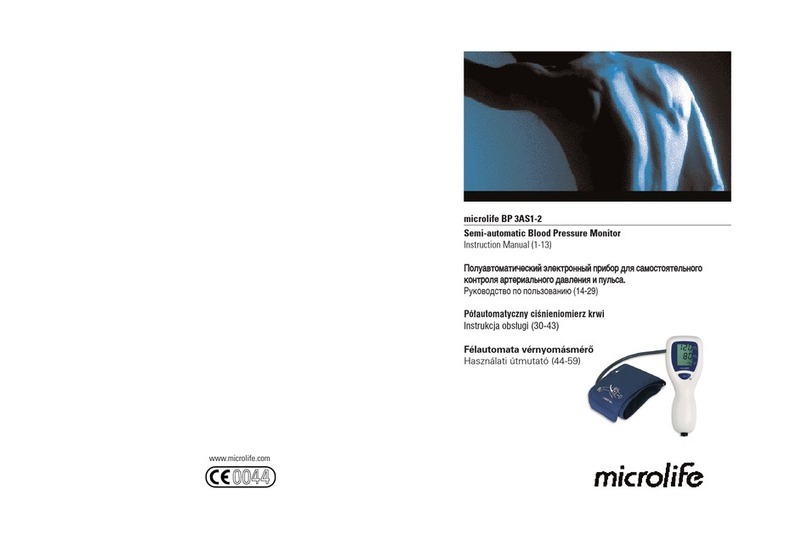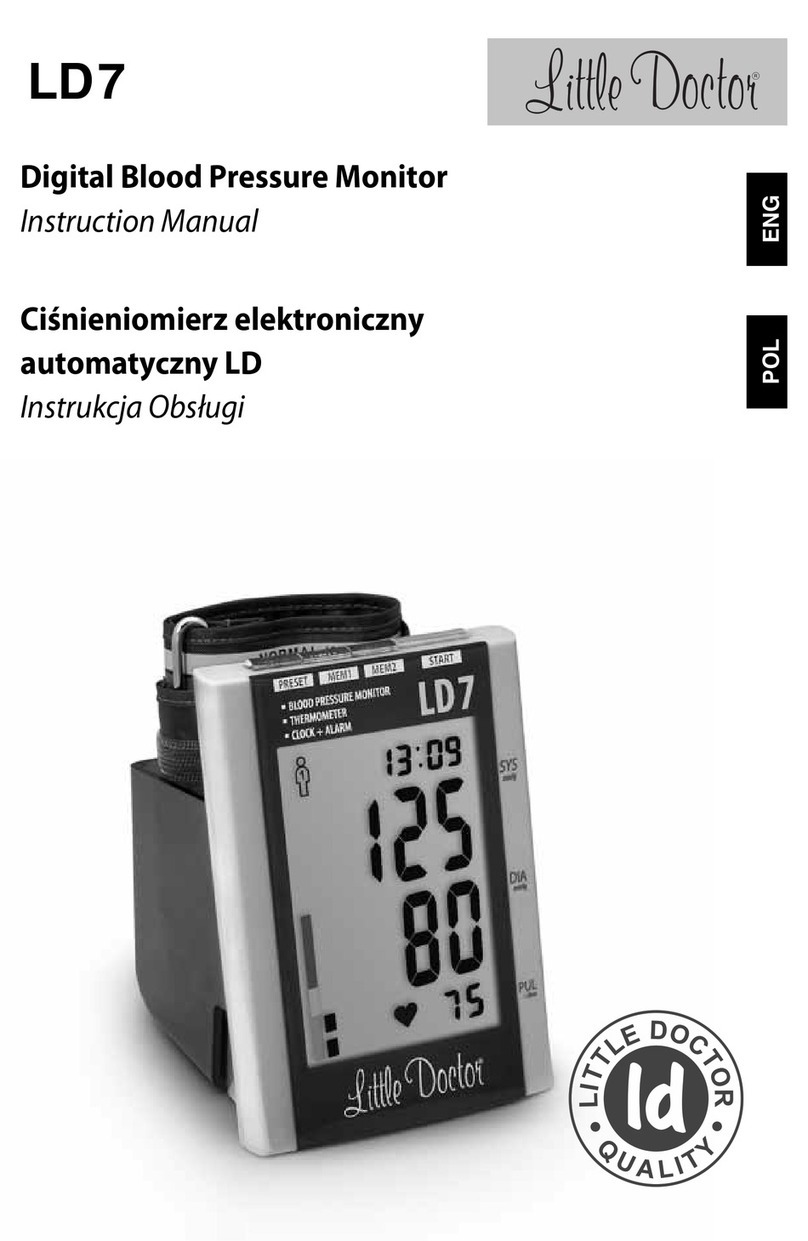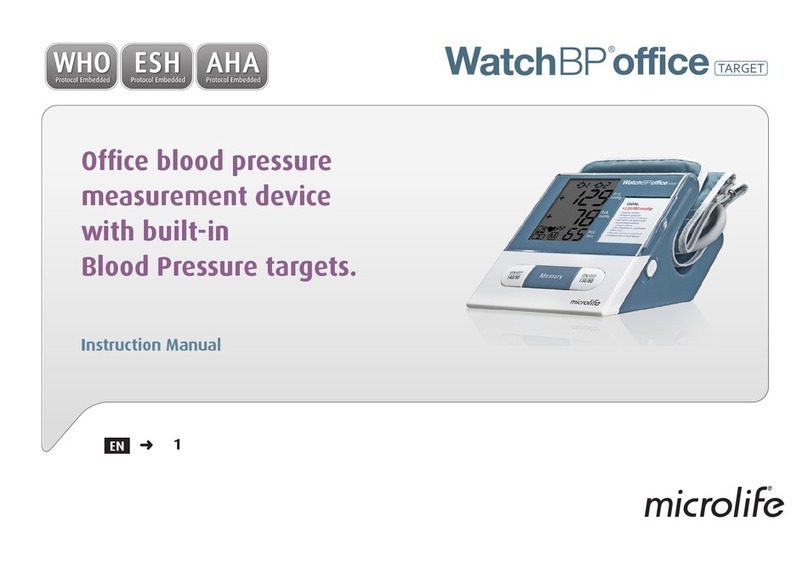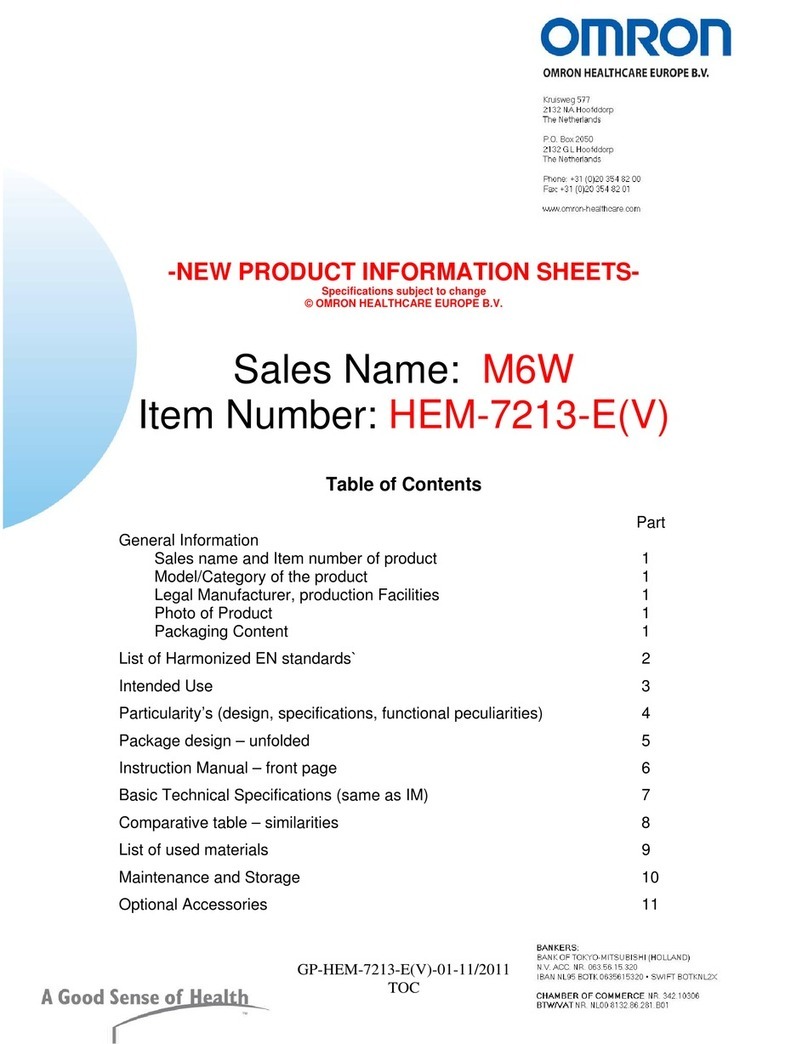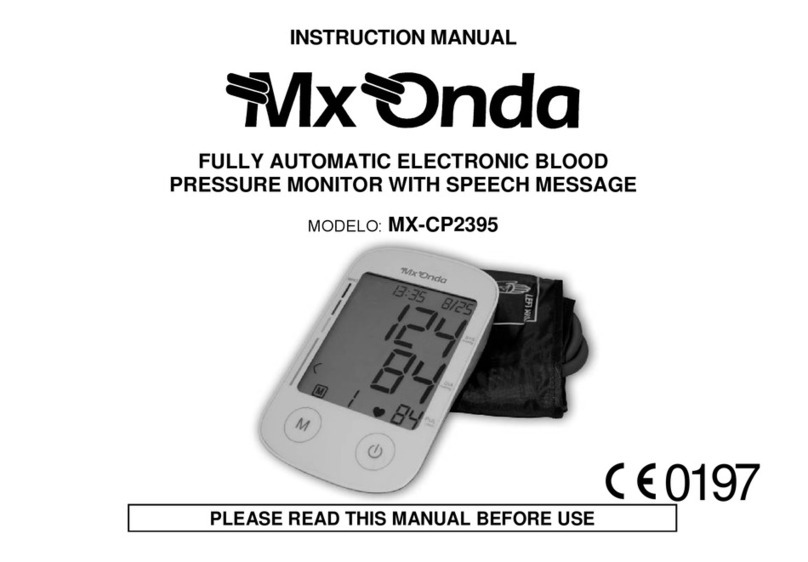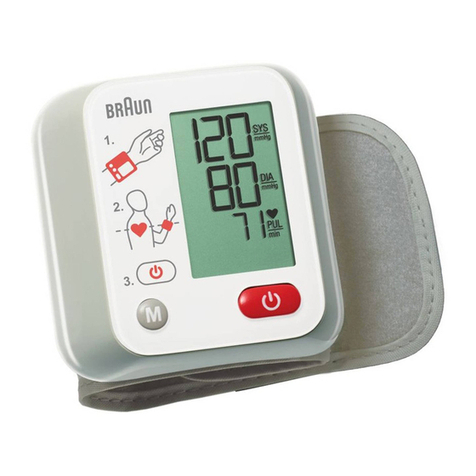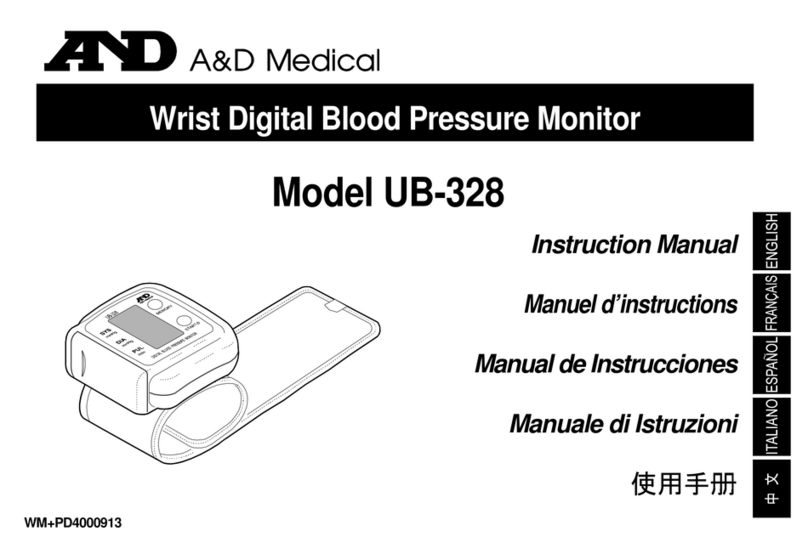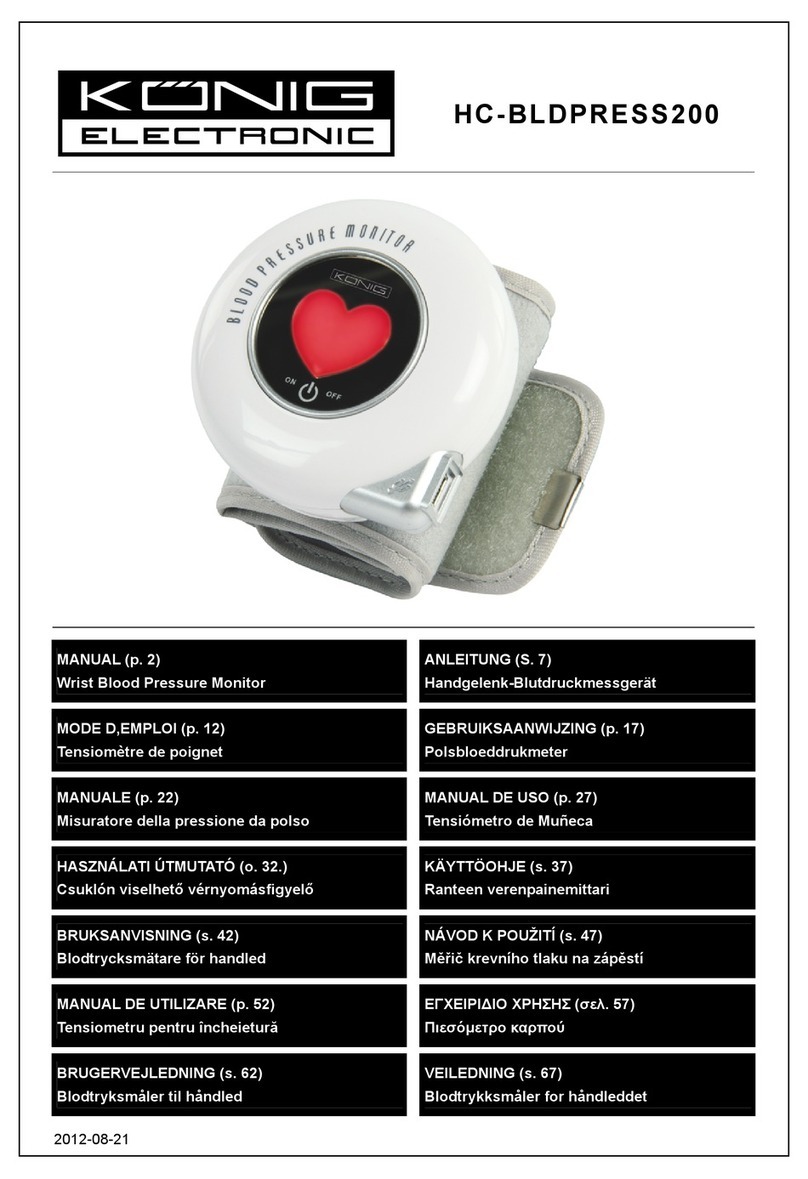
8/17
Average taken over multiple readings is more relevant than a single
measurement. Therefore several measurements are necessary.
(2) Some external elements can influence your blood pressure level: caffeine, tea,
alcohol, tobacco, Stress, Emotional status and Physical activities.
(3) Incorrect using way or cuff size of blood pressure monitor.
(4) Timing of taking measurements. Try to take readings at the same general times
each day (for example, once in the morning and once at night) for comparison
purposes.
Q5: Are there differences between taking a blood pressure reading on the right arm
vs. left arm?
Blood pressure measurement values vary from the left arm to the right arm. The
average is generally within 10 mmHg (millimeters of mercury) for most individuals.
We suggest you to use FORA’s blood pressure monitors on the left arm as they are
validated through clinical studies using the left arm. You should talk to your doctor
before using the right arm to take a measurement.
Q6: Which pressure is more important about hypertension -- the Systolic or Diastolic
blood pressure?
Both of them are important about hypertension.
When systolic pressure is higher, the heart is squeezing and pushing the blood round
the body and it gives the best idea of your risk of having a stroke or heart attack.
Having a raised systolic blood pressure but normal or low diastolic blood pressure is
called Isolated Systolic Hypertension (ISH) and carries an increased risk of
developing heart attacks or strokes and should be treated.
Diastolic blood pressure is also the risk indicator about stroke or heart attack. Some
studies suggest that, in people aged younger than 40 years, diastolic blood pressure
is a better way of assessing risk. It could be that diastolic blood pressure becomes


